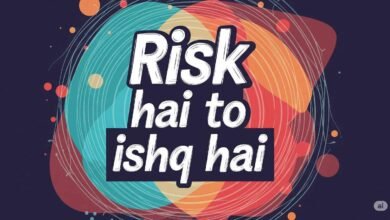India-Nepal Border Dispute: Birth of Anti-India Sentiment
INDIA-NEPAL BORDER ISSUES
INTRODUCTION
Over the past few years, we have been witness to the deteriorating relations between India and Nepal. Once again, relations between India and Nepal have taken a new turn over the recent issue of territory claim.
Nepal had issued a new political map showing the disputed areas of Kalapani and Lipulekh as part of their territory in response to India’s inaugurating a new road at Lipulekh. New Delhi claims that the areas were always part of Indian territory and remains affirms on their stand.
The incident fuelled the growing tensions in the India-Nepal relationship which began with a blockade in 2015 and further accelerated under a Communist government moving closer to China.
👉As per the Treaty of Sugauli, the Lipulekh Pass is claimed by Nepal and Kali river as the demarcation line for the boundary between India and Nepal.
The map of 1865 is a violation of the Treaty of Sugauli but Nepal Rulers didn’t mind losing this area as the strategic importance was less known.
Former Nepali Prime Minister Kirtinidhi Bista’s words before he passed away in November 2017, “There is no written agreement between King Mahendra and Prime Minister Nehru that India can produce. King Mahendra is long dead and the political system itself has changed in Nepal. Neither side has produced papers from the archives as such while the public rightly wants resolution. In absence of papers, there is no other way but to define the border according to words of the Sugauli Treaty.”
2015: India-China summit in Xian
An agreement was signed by Prime Minister Modi & the Chinese President Xi Jinping. to use the Lipu Lek pass for trade between the two countries. Nepal was not against this agreement
Anti-Indian sentiment in Nepal
👉Rajnath Singh(India’s Minister of Defence) recently inaugurated the 80 km Lipulekh road, it is the shortest route between capital New Delhi and Kailash-Mansarovar(a revered Hindu pilgrimage site in the Tibetan plateau).
There were many protests in Nepal against this road because it is considered as using Nepal’s owned land without its concern. This has further increased the tension between India and Nepal.
STATISTICS – What Numbers have to Say?
| F.Y.2012/13 | F.Y.2013/14 | F.Y.2014/15 | F.Y.2015/16 | F.Y.2016/17 | |
| Exports | 51,788,459.87 | 59,458,375.46 | 55,859,252.78 | 39,695,134.06 | 41,500,843.94 |
| Imports | 397,957,920.27 | 482,345,299.99 | 500,044,484.09 | 487,597,306.52 | 646,019,016.95 |
| Balance | -346,169,460.40 | -422,886,924.52 | -444,185,231.31 | -447,902,172.45 | -604,518,173.01 |
- Nepal shares a border of 1850 kms with India
- Indian states touching Nepal– Sikkim, Bihar, West Bengal, Uttarakhand, and Uttar Pradesh.
BACKGROUND
There has been a long tradition of Cultural Exchange and free movement of people across the borders. Treaty of Peace and Friendship of 1950 is the bedrock of the India-Nepal special relations that exist today. Both nations are also members of various regional and international platforms like the South Asian Association for Regional Cooperation (SAARC), etc.
DESCRIPTION – Let’s take a Deep Dive
Nepal and India enjoy excellent bilateral ties. Founded on the age-old connection of history, culture, tradition, and religion, these relations are deeply rooted in political, religious, social, and economic engagements.
Political
- Nepal-India relations are much more than the treaties and agreements between the two countries.
- The frequent high-level visits by the leaders of the two countries at different points of time and the interactions constitute the hallmark of the ties between the two countries.
Economic
- India is Nepal’s largest trading partner accounting for about 3% of Nepal’s total foreign direct investments.
- Both the public and private sectors of India have invested in Nepal. The trade statistics reveal a phenomenal increase in the volume of bilateral trade over the years between the two countries.
- Since the 1990s, Nepal’s exports to India have grown more than eleven times and bilateral trade more than seven times.
- The main items of exports from India to Nepal are petroleum products, motor vehicles, machinery, medicines, coal, cement, and chemicals.
- The main items of exports from Nepal to India are textiles, jute goods, threads, zinc sheets, copper wire, shoes, stones, and sand.
- There are over 150 operating Indian ventures in Nepal engaged in industries like manufacturing, services, power, and tourism.
Development Assistance
- The Government of India has provided financial and technical assistance to Nepal in the creation of infrastructure at the grass-root level.
- Various projects have been implemented in the areas of health, water, education, and rural & community development.
- Apart from granting assistance, the Government of India has also extended credit to the Government of Nepal for undertaking infrastructure development projects.
Education
- India’s contribution to human resource development in Nepal has been a significant aspect of bilateral cooperation.
- Around 3000 scholarships are announced annually to Nepali nationals for various courses at the Masters and Bachelors in India in fields of engineering, medicine, agriculture, sciences, computer application, business administration, fine arts, etc.
Culture
- Government of India has taken various initiatives to promote people-to-people contacts between the two countries by conducting various cultural programs, events, conferences, and seminars in Hindi as well in their languages.
- Exchange of people programs promotes respect and deep knowledge of each other’s customs and religions at higher levels.
Cooperation in Water Resources
- The water resource is the backbone of the Nepali economy.
- Various power Trade Agreements are signed between the two countries to cooperate in utilizing the resource efficiently.
- India not only provided monetary assistance but also the required technology to harness the power.
Defence Cooperation
- Bilateral defence cooperation includes assistance to the Nepalese Army in its modernization through the provision of equipment and training.
- The Gorkha Regiment of the Indian Army is partly raised from the hilly districts of Nepal.
- Every year India undertakes joint military exercise “Surya Kiran” with Nepal since 2011.
CHALLENGES
- The establishment of diplomatic relations between Nepal and China has resulted in declining India’s influence in Nepal.
- India is repetitively blamed for interfering in the political affairs of Nepal.
- The Indo-Nepal border is lightly guided and virtually open which is exploited by terrorist and insurgent groups from Northeast, example – supply of trained cadres, fake Indian currency. Internal security is a major concern for India.
- Over the years the trust deficit has widened between both the countries because of the Indian reputation for delaying the implementation of projects.
- With increasing Chinese influence in Nepal, there is a threat to India through Nepal in the Gangetic plains.
WAY FORWARD
- India has to focus on the implementation and delivery of promises on time by working together to uphold the trust.
- India should sign a bilateral investment treaty for the free flow of trade activities across the two countries to boost the trade.
- India can initiate geographical and cultural interdependence activities between the two nations based on sovereign equality and mutual benefit.
- Bridging the Information Gap: Exchange of data and information can help both the countries in fields such as science and technology. This will help to achieve sustainable goals faster and will promote cooperation in dealing with various challenges together.
- Promoting people to people contact by boosting tourism and cultural activities.
CONCLUSION
The urgent need today is to pause the territorial nationalism and coming together on the negotiable table for a dialogue where both sides need to display sensitivity so that the relationship can be restored faster. A new relationship where both the countries will focus on becoming a generous partner will be a better foundation for “neighbourhood first” in the 21st century.
Author: Priyanka Mahala
Must Explore



